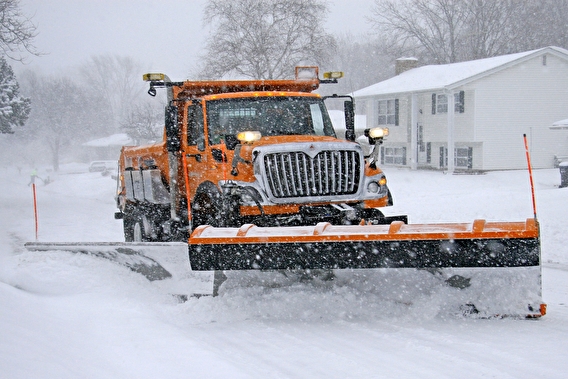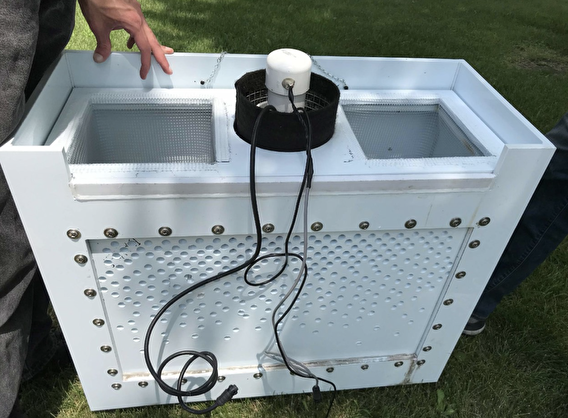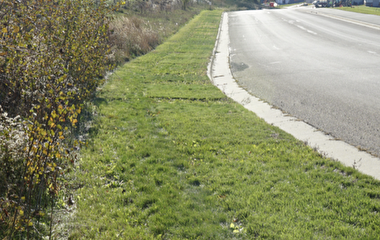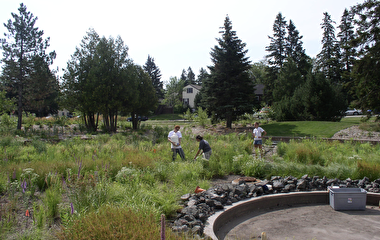
U of M researchers recently collaborated with the City of Edina on a research project that aimed to gather data and create tools for reducing road salt contamination in Minnesota’s urban waters.
“When operators have the right tools to do their jobs, they can maintain a high level of service and use less salt,” says Jessica Wilson, Edina’s water resources coordinator.
Chloride is necessary for winter road safety but also a potential hazard to human and environmental health. According to the Minnesota Pollution Control Agency (MPCA), chloride can be toxic for people and aquatic life if it leaches into watersheds in high enough concentrations. And once it’s in our waters, there’s no feasible way to remove it.
Chloride also eats into infrastructure and budgets—both public and private. A 2015 MPCA study estimated that in the Twin Cities metropolitan area alone, the total costs of chloride use for roads—including salt, labor, and equipment; damage to trees; and corrosion to bridges, pavement, and vehicles—come to $0.4 to $1.2 billion per year.
Many transportation agencies are working to reduce their salt use. The first step in this project was to gain a better understanding of how chloride moves from roads to watersheds—an understudied dynamic, says Larry Baker, the principal investigator and a professor in the Department of Bioproducts and Biosystems Engineering.
To gather the necessary data, the researchers designed a new type of meltwater sampler and fitted it below Edina stormwater grates to measure variables including flow, temperature, and chloride concentrations. They deployed the sampler during two winters (2017–18 and 2018–19) and also took core samples from roadside snow piles for chloride testing. The team also compiled extensive data on salt use and application rate from Edina’s fleet of automated trucks.

One noteworthy finding from the team’s analysis is that chloride movement doesn’t tend to be gradual—rather, it comes in short bursts during a handful of events spread across the year. During both winters, the researchers found that around 90 percent of the yearly chloride loading moved off the roads in under eight non-consecutive days.
“It occurs when you have these large melt events,” Baker says. “Particularly these ‘winter mix’ events, where you might have snow falling that accumulates, melts, and then freezes.” A contributing factor in this pattern may be roadside snow piles, which were shown to accumulate large amounts of chloride.
Using data from the Edina study and from a previous study conducted by the U’s St. Anthony Falls Laboratory, the researchers then developed scenario models to evaluate chloride movement throughout larger watersheds. They also created an Active Management Toolkit with a training guide and spreadsheet tools. One spreadsheet, for example, allows users to forecast chloride concentrations in groundwater depending on the percentage of impervious surfaces. This active management approach—checking the effects of actions and making adjustments—is one way that local agencies may be able to reduce salt use while maintaining winter traffic mobility, Baker says.
The U team also coordinated workshops with Edina public works staff at the end of each winter of the study. The workshops brought together the researchers and plow operators and their supervisors to share data and knowledge for improving operations.
According to the project final report, the workshops had the intended effect, stimulating creative thinking and generating a suite of solutions to reduce salt use. For example, operators in the first workshop proposed the purchase of carbide blades to improve ice removal, which led the city to purchase and install five carbide blades in 2018. The carbide blades seemed to improve ice removal and had the side benefit of being far less noisy than steel blades, Baker says.
The research was funded by the Minnesota Local Road Research Board. The final report, toolkit, and two videos are available on MnDOT’s research project web page.
Writer: Sophie Koch


